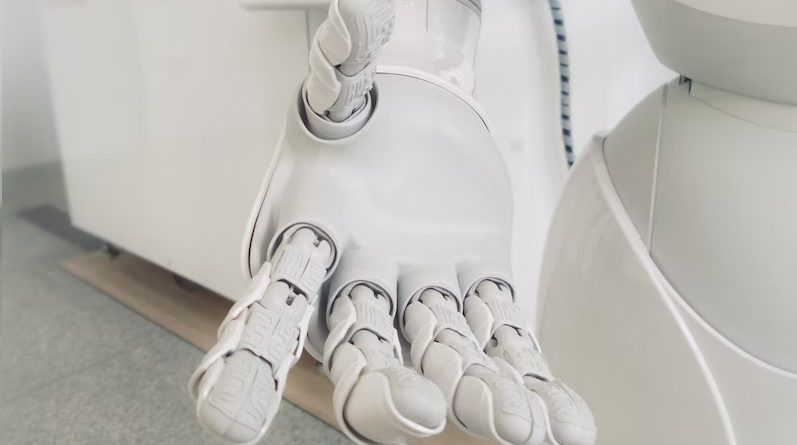Application of AI in various fields
Artificial Intelligence is transforming the manufacturing industry by improving efficiency and reducing costs. By using AI-powered predictive maintenance systems, manufacturers can identify when equipment is likely to fail and schedule repairs before a breakdown occurs. AI-powered robots are also being used in factories to perform tasks that are dangerous or repetitive for humans.Here we will discussed about Application of AI in various fields.
I.Predictive Analytics
Predictive analytics is the use of data, statistical algorithms, and machine learning techniques to identify the likelihood of future outcomes based on historical data. AI plays a significant role in predictive analytics by enabling computers to analyze vast amounts of data and detect patterns that humans would be unable to identify.
Some of the applications of AI in predictive analytics include:
1. Fraud detection: AI can be used to identify patterns of fraud in financial transactions and other types of online activities.
2. Sales forecasting: AI can be used to predict future sales trends based on past data, enabling businesses to plan their inventory and production schedules more effectively.
3. Risk management: AI can be used to analyze large amounts of data to identify potential risks and recommend strategies to mitigate them.
4. Marketing: AI can be used to analyze customer data to identify patterns of behavior and preferences, enabling businesses to create more targeted marketing campaigns.
5. Healthcare: AI can be used to analyze patient data to identify patterns of disease and recommend appropriate treatments.
6. Weather forecasting: AI can be used to analyze vast amounts of data from weather sensors, satellites, and other sources to predict future weather patterns with greater accuracy.
Overall, AI has revolutionized the field of predictive analytics, enabling businesses and organizations to make better decisions based on data-driven insights.
II . Fraud Detection
Artificial Intelligence (AI) has proven to be a valuable tool in detecting fraud in various industries. The applications of AI in fraud detection range from identifying unusual patterns in financial transactions to monitoring employee behavior for signs of fraud. Some of the specific ways in which AI is used in fraud detection include:
1. Anomaly detection: AI algorithms can be used to identify unusual patterns in financial transactions, such as unusual purchase amounts or unusual timing of transactions. This can help flag potential fraudulent activity and alert investigators to investigate further.
2. Network analysis: AI can be used to identify networks of people who may be involved in fraudulent activity. By analyzing data such as phone records and social media activity, AI can identify connections between individuals that may not be immediately apparent to investigators.
3. Behavior monitoring: AI can be used to monitor employee behavior and identify any unusual activity that may indicate fraud. For example, AI can flag an employee who suddenly starts accessing sensitive data outside of their normal working hours or downloading large amounts of data to an external device.
4. Natural Language Processing (NLP): AI can be used to analyze text data, such as emails or chat logs, to identify suspicious language that may indicate fraudulent activity.
5. Machine Learning: AI can be used to learn from past instances of fraud and identify patterns that can help detect future instances of fraud. Machine learning algorithms can continuously analyze data to improve their accuracy and identify new types of fraud.
Overall, AI can help organizations detect and prevent fraud more effectively and efficiently than traditional methods. By analyzing large amounts of data and identifying patterns that may not be immediately apparent to investigators, AI can help organizations stay one step ahead of fraudsters.
D. Chatbots
E. Recommendation Systems
III. Supply Chain Management
Supply chain management involves the coordination and management of the flow of goods, services, and information between businesses, suppliers, and customers. AI has transformed the way supply chains are managed, making them more efficient, reliable, and cost-effective. Here are some applications of AI in supply chain management:
1. Demand Forecasting: AI algorithms can analyze historical data, market trends, weather patterns, and other factors to forecast demand accurately. This helps businesses optimize inventory levels and reduce stockouts and overstocking.
2. Inventory Management: AI can help manage inventory levels in real-time, optimizing the flow of goods through the supply chain. This reduces the risk of stockouts and excess inventory and improves the overall efficiency of the supply chain.
3. Route Optimization: AI can analyze real-time traffic data, weather patterns, and other variables to optimize delivery routes, reducing delivery times and costs. This results in faster and more efficient delivery, reducing lead times and improving customer satisfaction.
4. Quality Control: AI-powered quality control systems can identify defects and anomalies in products, reducing the risk of recalls and improving product quality.
5. Supplier Management: AI can help businesses identify and onboard the best suppliers based on their performance history and other factors. It can also help manage supplier relationships, track supplier performance, and automate supplier payments.
Overall, the application of AI in supply chain management can lead to significant improvements in efficiency, productivity, and cost savings. It can also help businesses respond quickly to changes in demand and market conditions, giving them a competitive edge in the marketplace.
IV. Applications of AI in Healthcare
How AI is revolutionizing the healthcare industry with its ability to analyze vast amounts of medical data and make accurate diagnoses.AI is being used in healthcare to improve patient outcomes and reduce costs. For example, machine learning algorithms can analyze medical data to predict which patients are at high risk of developing certain diseases, allowing doctors to intervene early and prevent serious health issues. AI-powered robots are also being used in surgery to improve accuracy and speed up recovery times.
1) Disease Diagnosis
2) Drug Discovery
3) Predictive Maintenance
4) Telemedicine
5) Wearable Devices
6) Personalized Medicine
Artificial intelligence (AI) has the potential to revolutionize the field of disease diagnosis, providing doctors with faster and more accurate ways of detecting and treating illnesses. Here are some of the key applications of AI in disease diagnosis:
1. Medical imaging analysis: AI algorithms can analyze medical images, such as X-rays, CT scans, and MRIs, to detect abnormalities and diagnose diseases such as cancer, heart disease, and neurological disorders. These algorithms can identify subtle patterns and changes that may be difficult for human doctors to detect, improving the accuracy and speed of diagnosis.
2. Electronic health records (EHRs): AI can analyze large amounts of patient data contained in EHRs, including medical histories, lab results, and imaging studies, to identify patterns and predict disease risk. This can help doctors to make more informed decisions about diagnosis, treatment, and disease prevention.
3. Precision medicine: AI can help doctors to tailor treatments to individual patients based on their unique genetic profiles and medical histories. This can improve the effectiveness of treatments and reduce the risk of adverse side effects.
4. Drug discovery: AI can help to identify new drug targets and develop more effective treatments for diseases. By analyzing vast amounts of biological data, AI algorithms can identify patterns and relationships that may not be apparent to human researchers.
5. Virtual assistants: AI-powered virtual assistants can help patients to navigate the healthcare system, providing information on symptoms, treatments, and medications. They can also help to triage patients and schedule appointments, freeing up doctors’ time for more complex tasks.
6. Telemedicine: AI can support remote diagnosis and treatment through telemedicine platforms, which use video conferencing and other technologies to connect patients with doctors and specialists. This can improve access to care for patients in remote or underserved areas.
Overall, the applications of AI in disease diagnosis have the potential to improve the accuracy, speed, and effectiveness of healthcare, leading to better outcomes for patients and reduced healthcare costs. However, it is important to ensure that these technologies are developed and deployed ethically, with appropriate safeguards to protect patient privacy and ensure equity of access to care.
V. Applications of AI in Education
AI in education: How AI-powered educational software is changing the way students learn and helping teachers personalize education for each student.How chatbots and virtual assistants are using AI to provide 24/7 customer service and support.AI is being used in education to personalize learning and improve student outcomes. AI-powered systems can analyze student data to identify areas where they need extra help and provide targeted support. AI-powered chatbots can also help students with their studies, answering questions and providing feedback.
A. Intelligent Tutoring Systems
B. Adaptive Learning
C. Personalized Learning
D. Automated Grading
E. Chatbots
F. Virtual Assistants
Intelligent Tutoring Systems (ITS) is an application of AI that uses machine learning algorithms and natural language processing to provide personalized and adaptive learning experiences to students. With ITS, students receive customized instruction and feedback that is tailored to their individual needs, learning style, and pace of learning.
The use of ITS in education has several benefits. For example, it can help to improve student engagement, motivation, and learning outcomes. It can also enable teachers to provide more individualized instruction and support, which can be especially valuable in large classes or in remote learning environments.
Some of the key features of ITS include:
1. Personalization: ITS can adapt the content and delivery of instruction to the needs and preferences of individual learners.
2. Feedback: ITS can provide immediate feedback to students on their performance, which can help them to identify areas where they need to improve and to reinforce their learning.
3. Adaptivity: ITS can adjust the difficulty level of the content based on the student’s performance and progress.
4. Interactivity: ITS can provide interactive learning experiences that engage students and promote active learning.
5. Analytics: ITS can track student performance and generate data that can be used to inform instructional decisions and improve learning outcomes.
The use of ITS is becoming increasingly common in education, and it has been shown to have positive effects on student learning outcomes in several studies. As AI technology continues to advance, we can expect to see further improvements in the capabilities and effectiveness of ITS.






